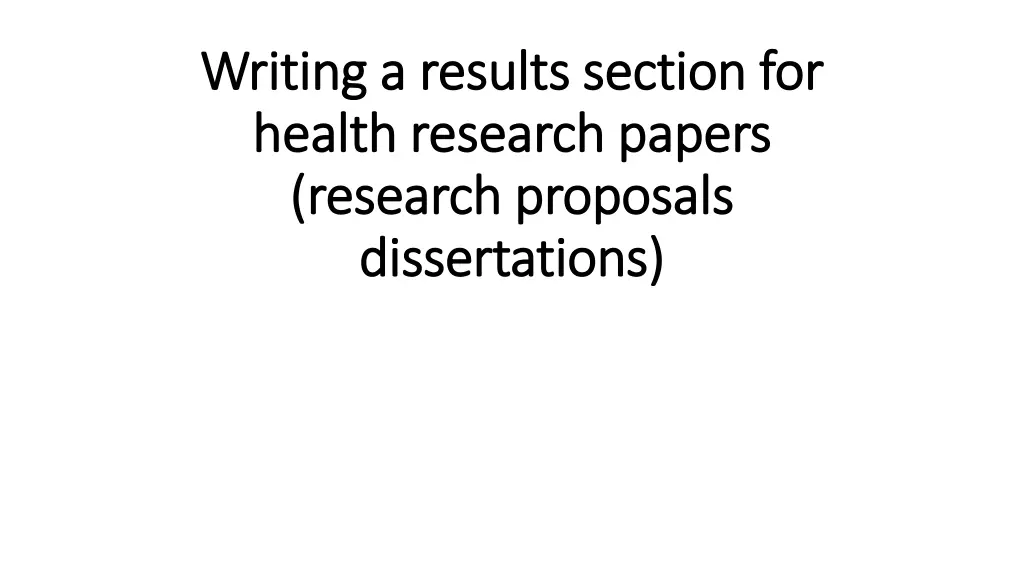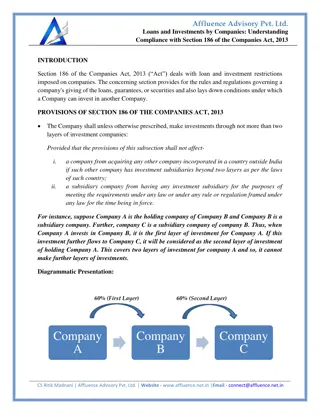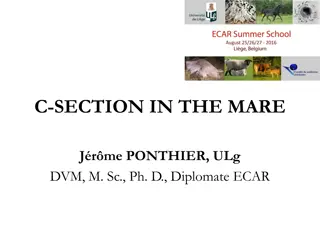
Effective Strategies for Writing Results Section in Health Research Papers
Learn how to structure and present the results of health research effectively to convey key findings accurately. Follow guidelines on what to include, maintain a balance of detail, and ensure your results support the claims made in your paper.
Download Presentation

Please find below an Image/Link to download the presentation.
The content on the website is provided AS IS for your information and personal use only. It may not be sold, licensed, or shared on other websites without obtaining consent from the author. If you encounter any issues during the download, it is possible that the publisher has removed the file from their server.
You are allowed to download the files provided on this website for personal or commercial use, subject to the condition that they are used lawfully. All files are the property of their respective owners.
The content on the website is provided AS IS for your information and personal use only. It may not be sold, licensed, or shared on other websites without obtaining consent from the author.
E N D
Presentation Transcript
Writing a results section for Writing a results section for health research papers health research papers (research proposals (research proposals dissertations) dissertations)
Research paper structure Research paper structure Introduction: why ask this research question? Methods: what did we do? Results: what did we find? Discussion: what might it mean? Conclusion: overall key message.
The purpose of the results section The purpose of the results section To summarise the findings of applying your methods: the data that were collected the results of the statistical (or thematic) analyses that were performed. Report results fully & honestly, as pre-specified Needs to be done with very little subjective interpretation Save your interpretation for what such results might mean in the discussion section.
What to include What to include Present in a logical order: The features of the participants (descriptive) Results by research question Text (story), Tables and figures )with the more detailed evidence) Report primary outcomes first Report essential summary statistics Include Effect Sizes and give confidence intervals for main results Results of sub -roup and sensitivity analyses (distinguish a priori from exploratory analyses).
Sufficient but not too much detail Sufficient but not too much detail The results section should be a relatively brief overview of your findings, not a complete presentation of every single number and calculation. Leave out non-essential tables and figures; these can be included as supplementary files Can numerical results be extracted from your paper easily (for a meta-analysis)?
Results should justify your claims later in the paper Results should justify your claims later in the paper Make sure that the information reported in the results section justifies your claims. As you write your discussion section, look back on your results to ensure that all the data you need is there to fully support the conclusions you reach.
Report Your Statistical Findings Report Your Statistical Findings Assume that your readers have a solid understanding of statistical concepts. There's no need to explain a t-test! Include Effect Sizes, ORs and confidence intervals don t just report p-values
Don't Omit Relevant Findings Don't Omit Relevant Findings Be sure to mention all relevant information. If your hypothesis expected more statistically significant results, don't omit Don't ignore negative results. Just because a result failed to support your hypothesis, it does not mean it is not important.
Use international guidance on reporting by Use international guidance on reporting by study design study design CONSORT: randomised trials STROBE: observational studies in epidemiology STARD: diagnostic accuracy studies COREQ: qualitative research SQUIRE: quality improvement studies COGS: clinical practice guidelines PRISMA: systematic reviews http://www.equator-network.org/
Use guideline relevant to your study design Use guideline relevant to your study design http://www.equator-network.org/toolkits/writing- research/#Goodexamples Strobe for Observational Studies: https://www.ncbi.nlm.nih.gov/corecgi/tileshop/tileshop.fcgi?p=PMC3& id=315420&s=12&r=6&c=4 Qualitative studies: https://academic.oup.com/view-large/27217733






















